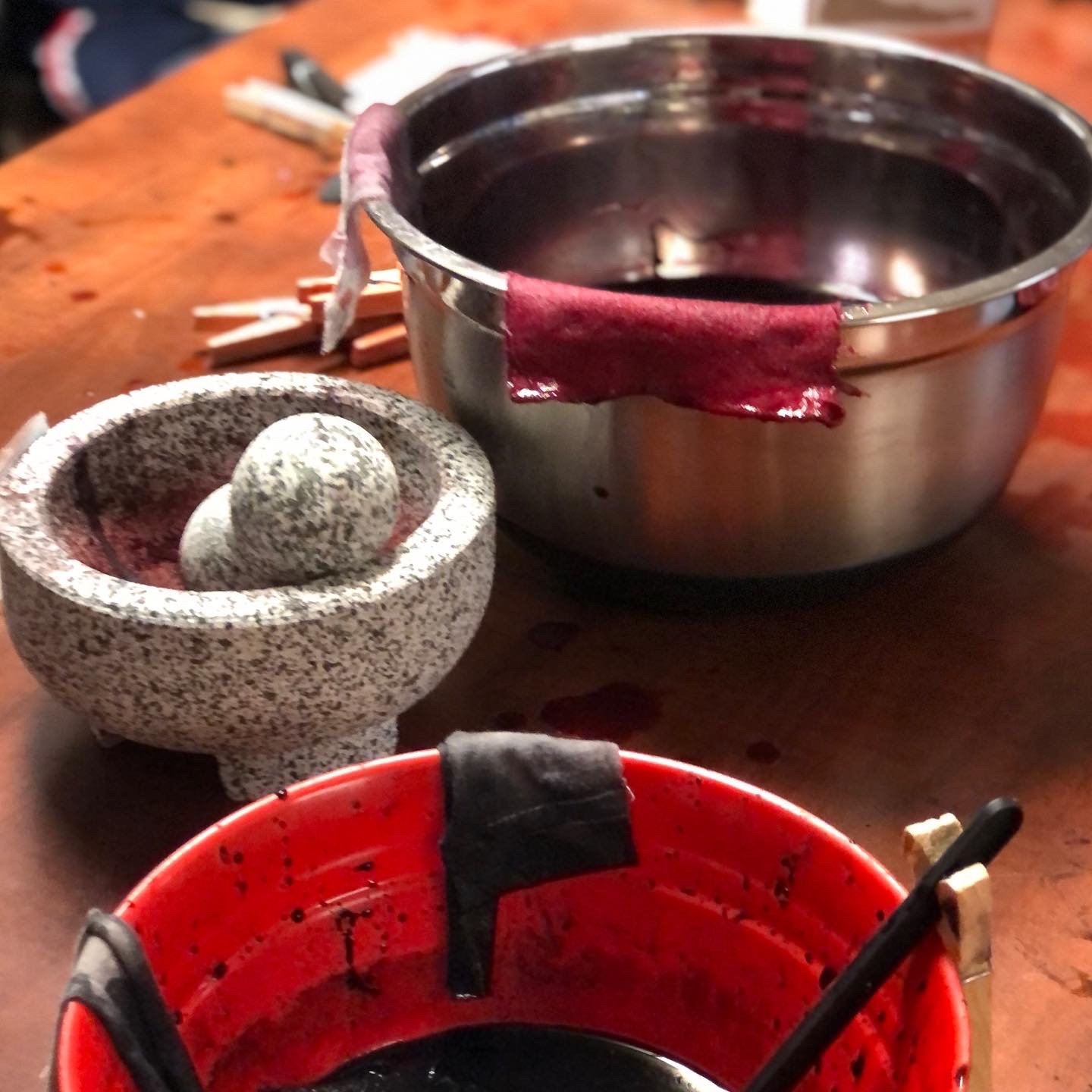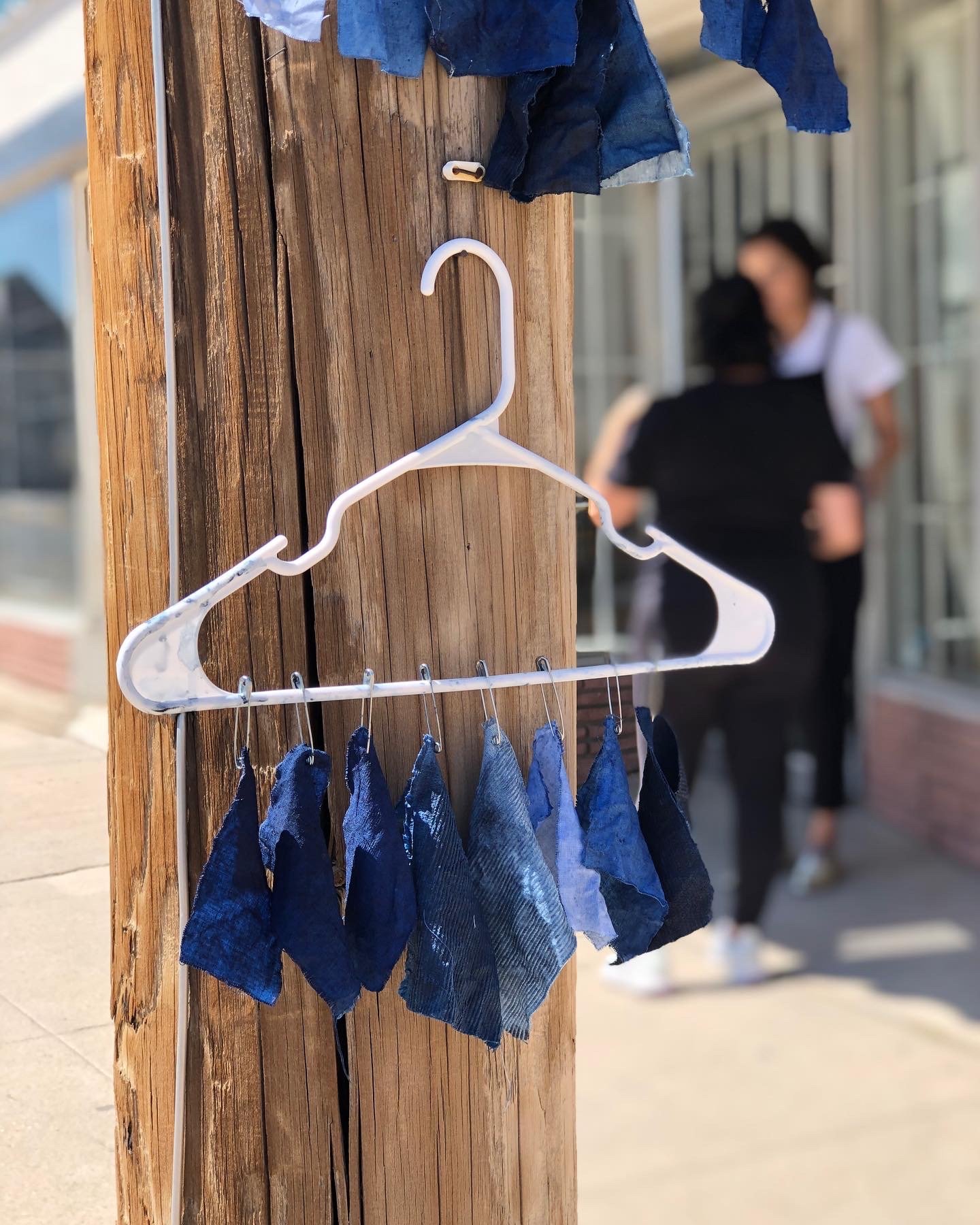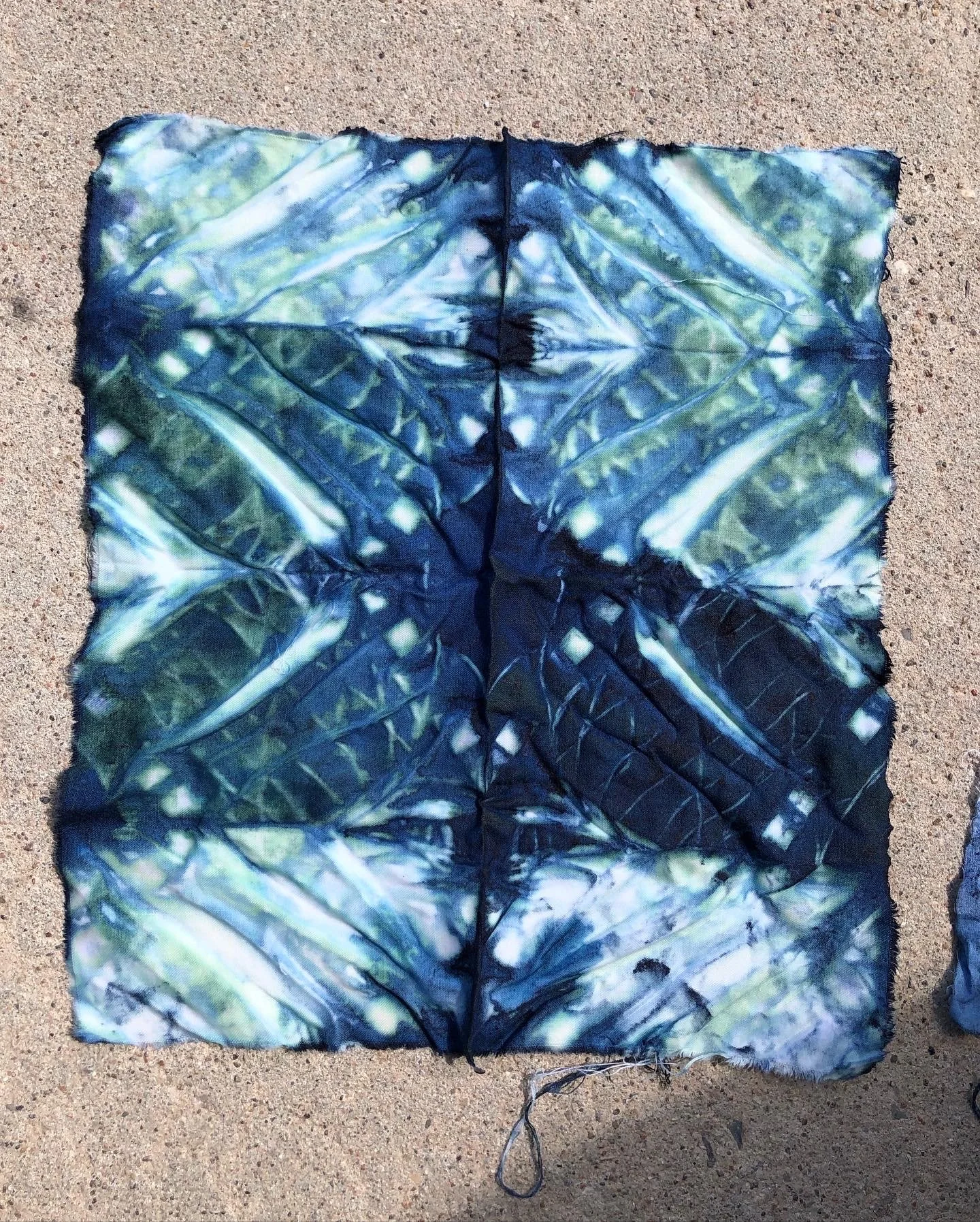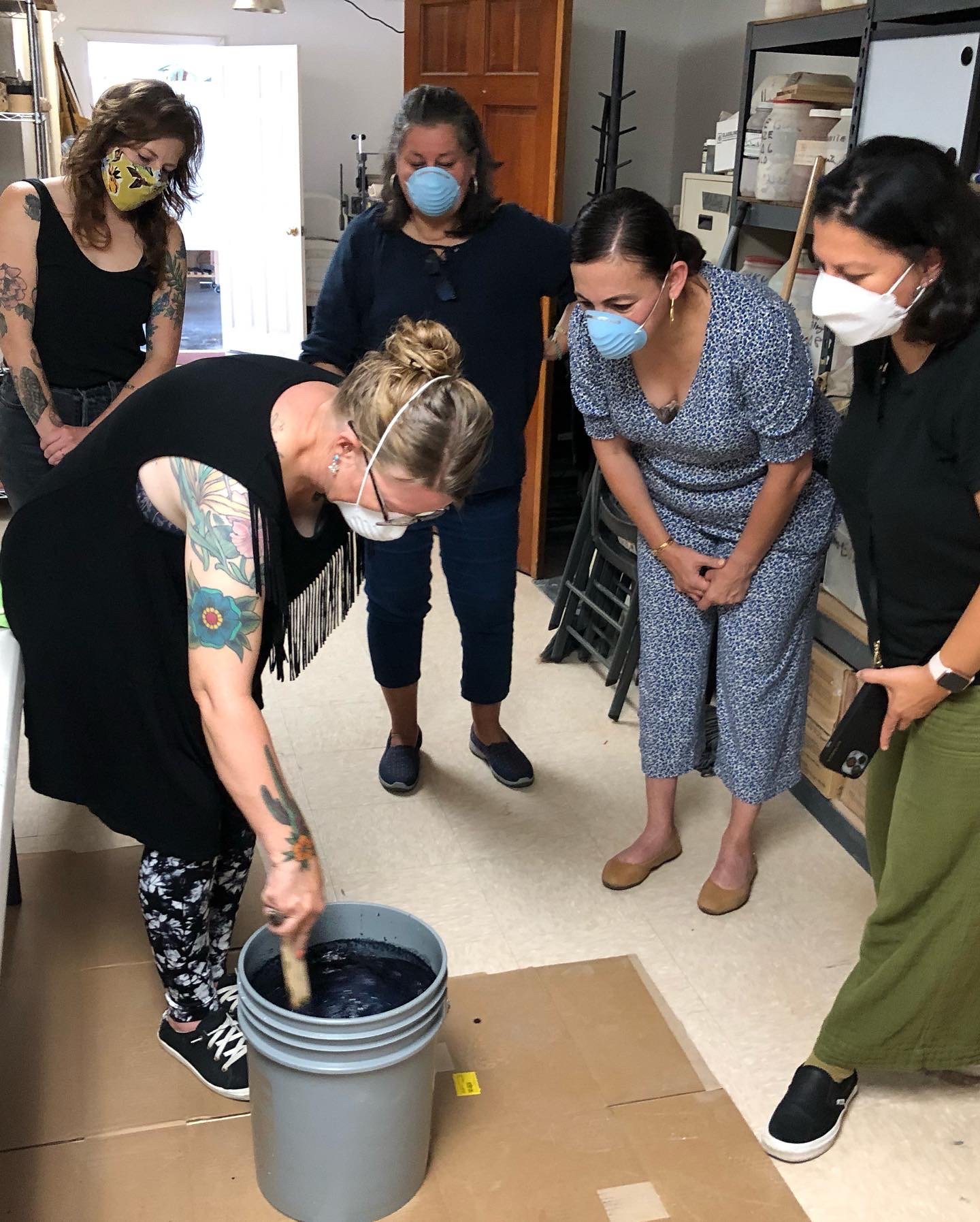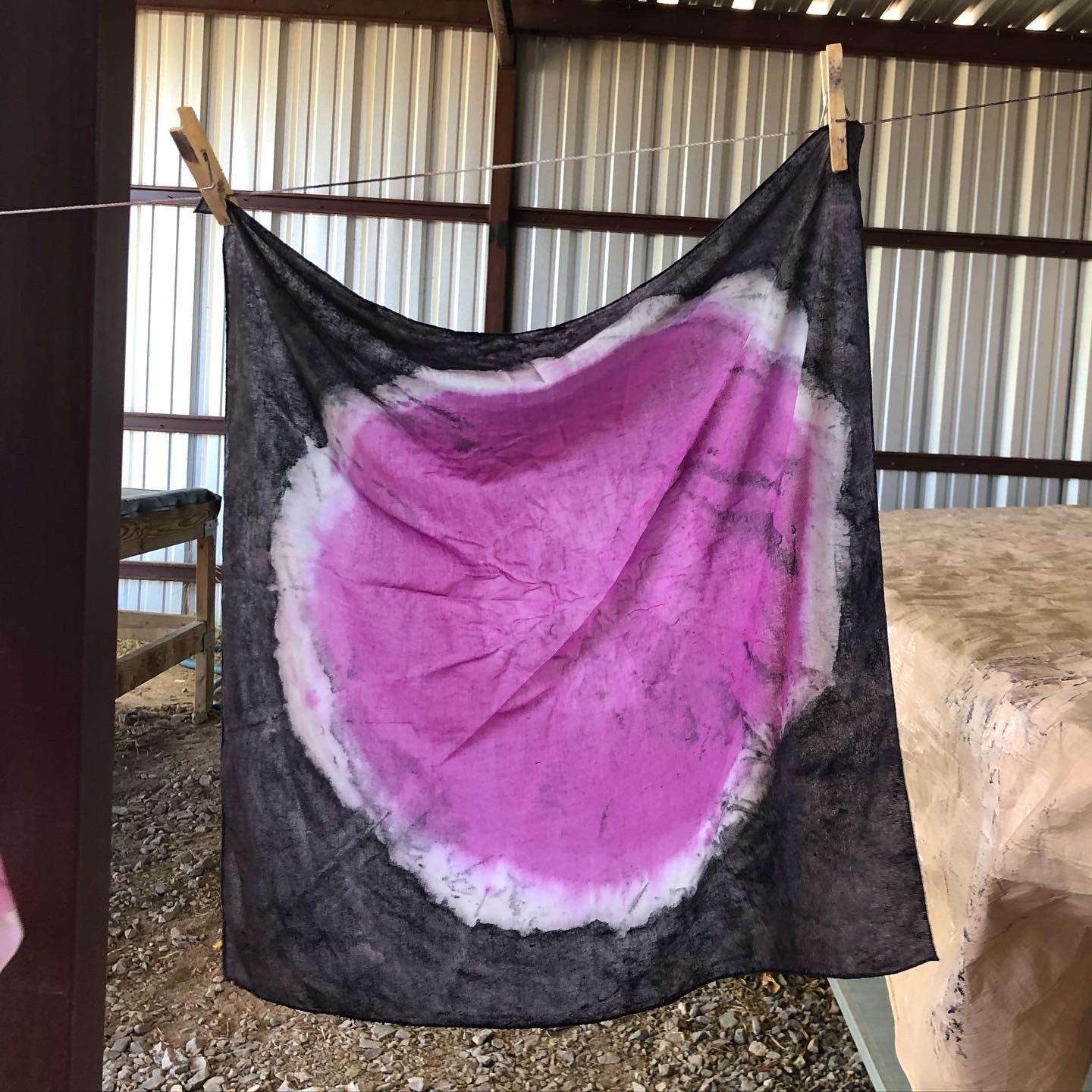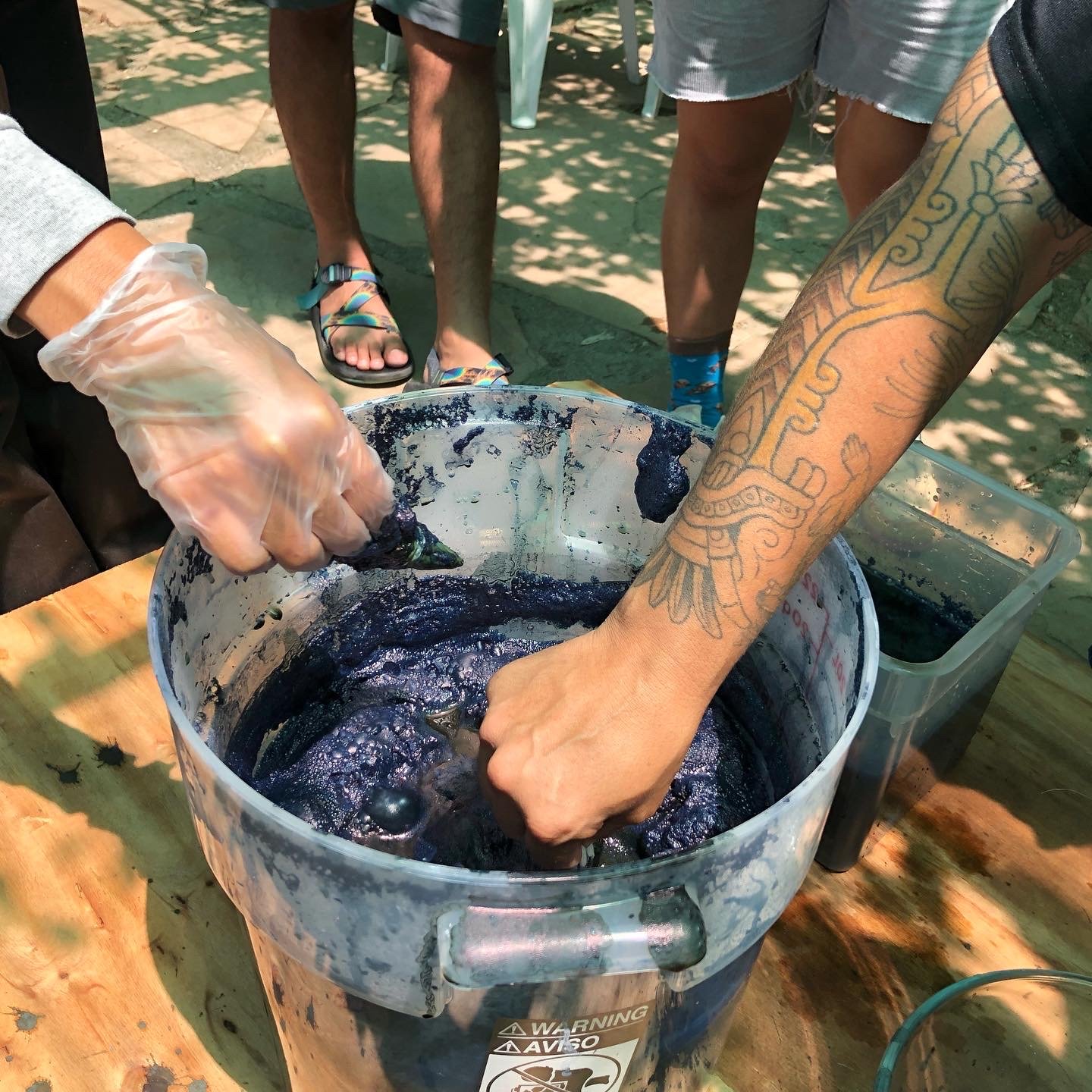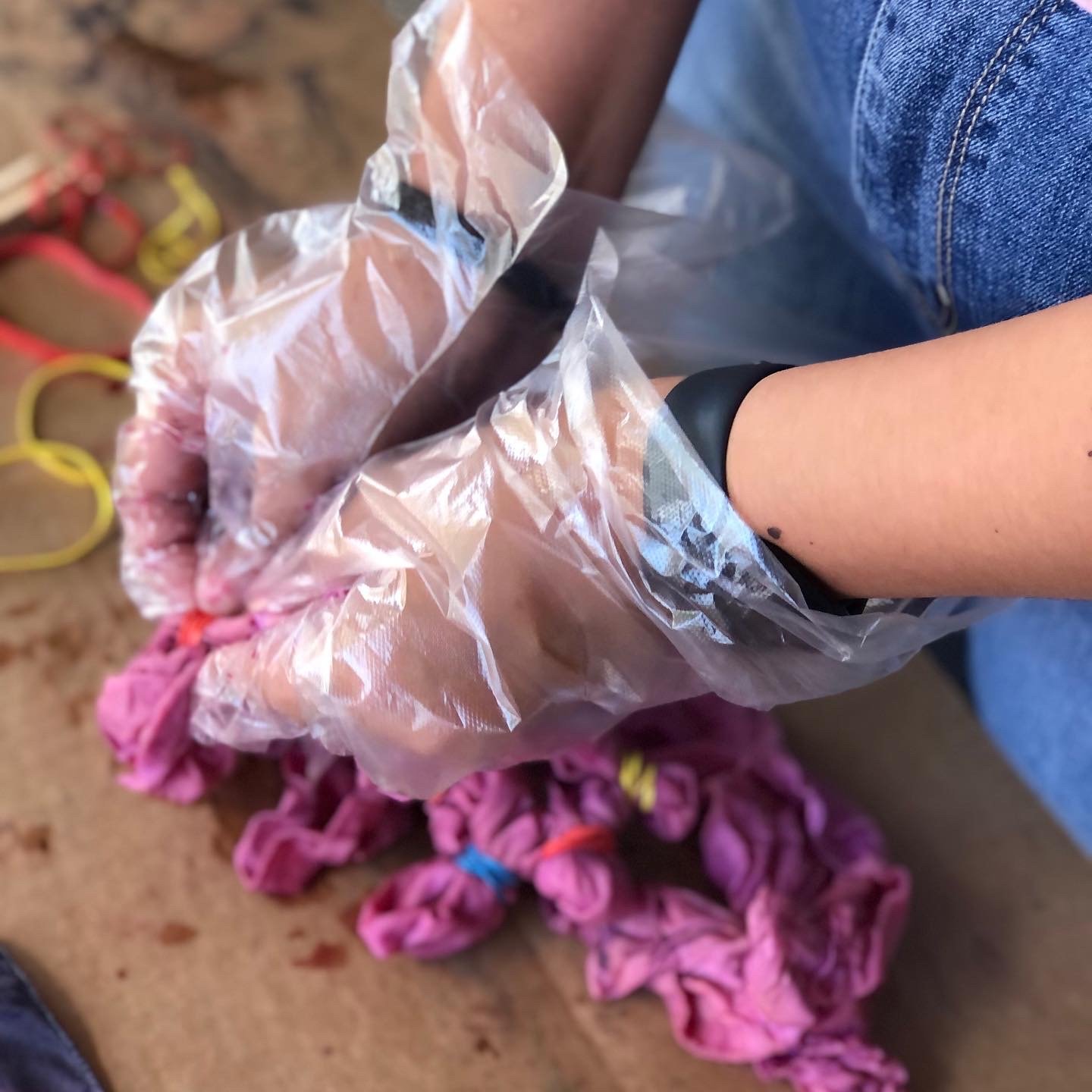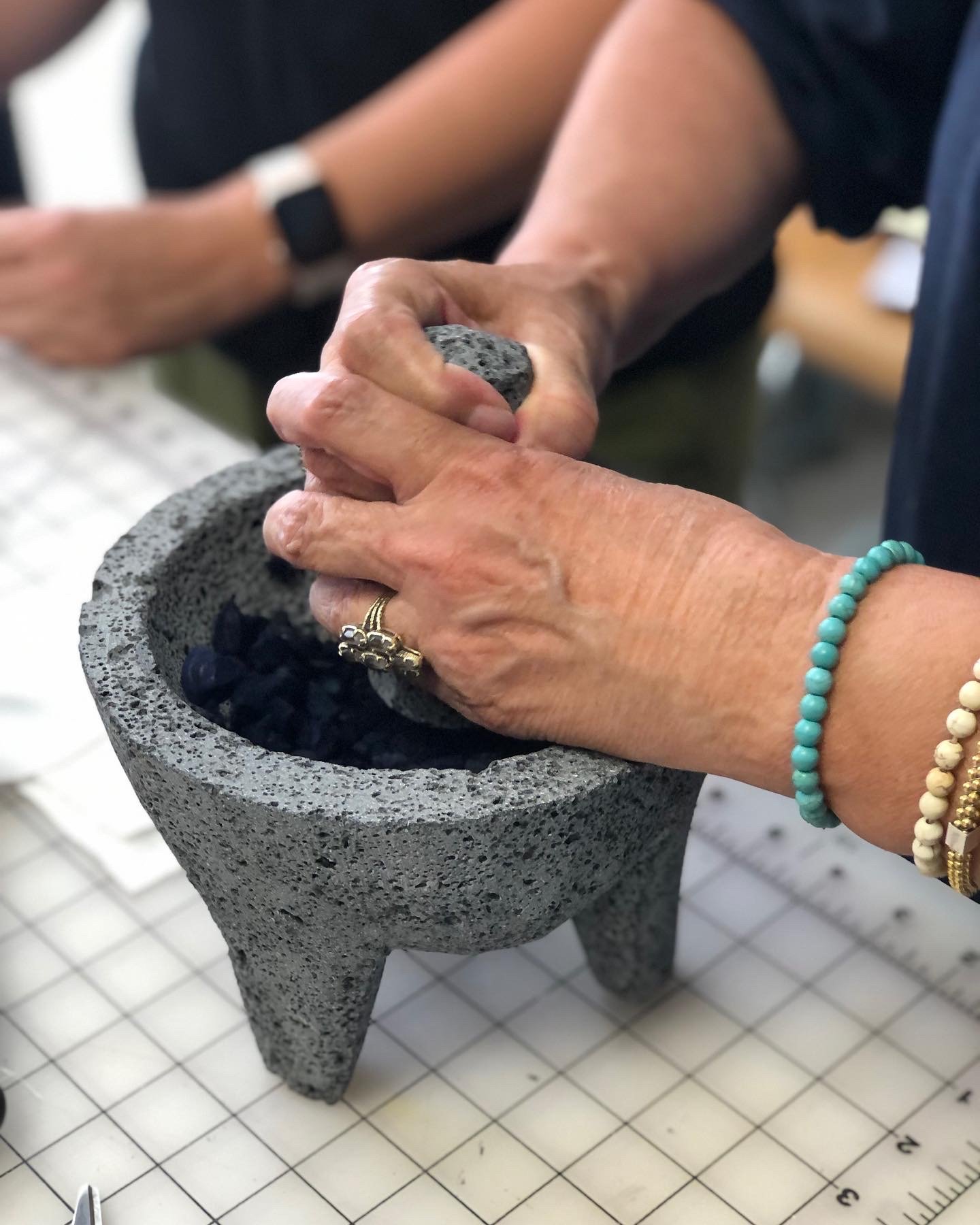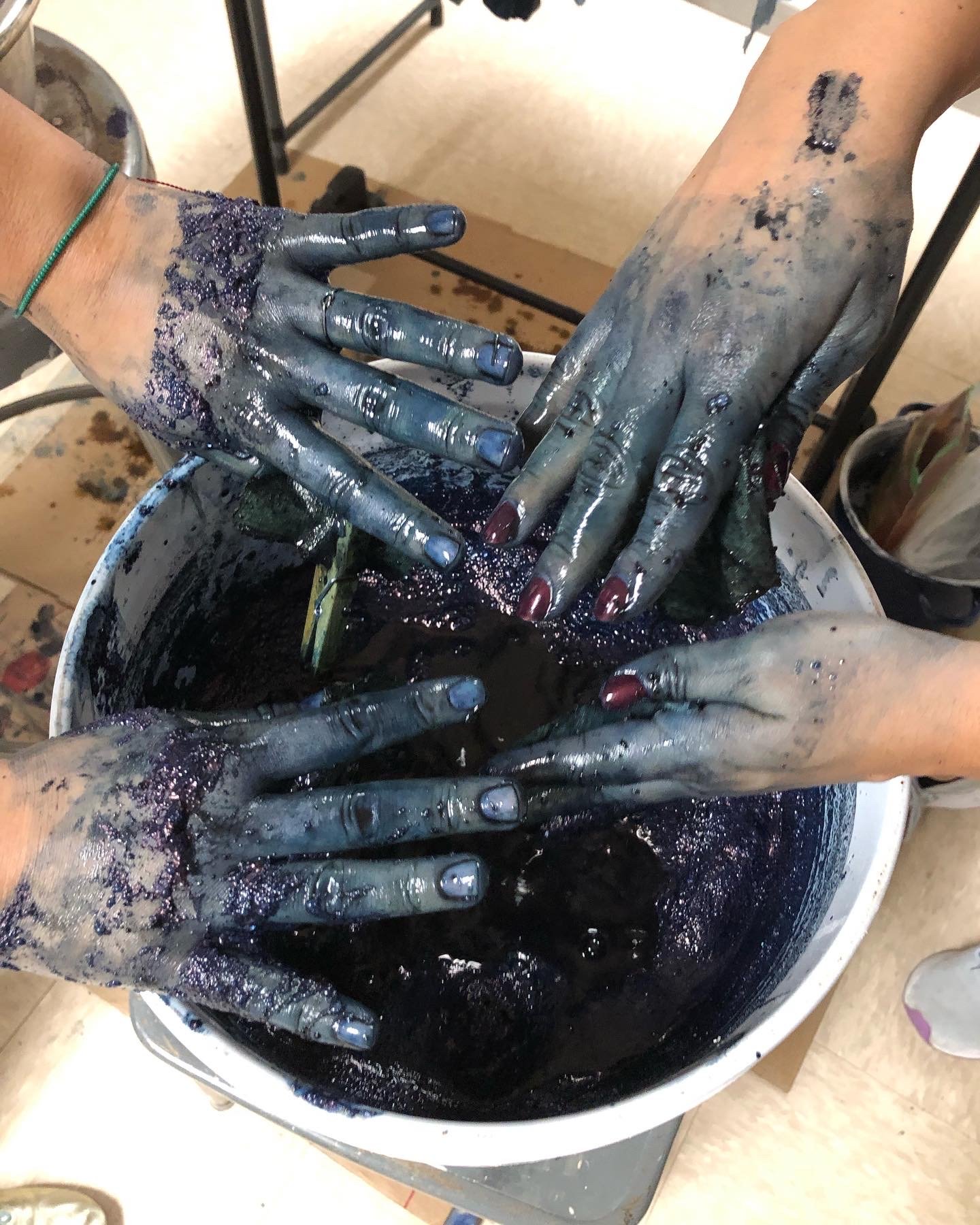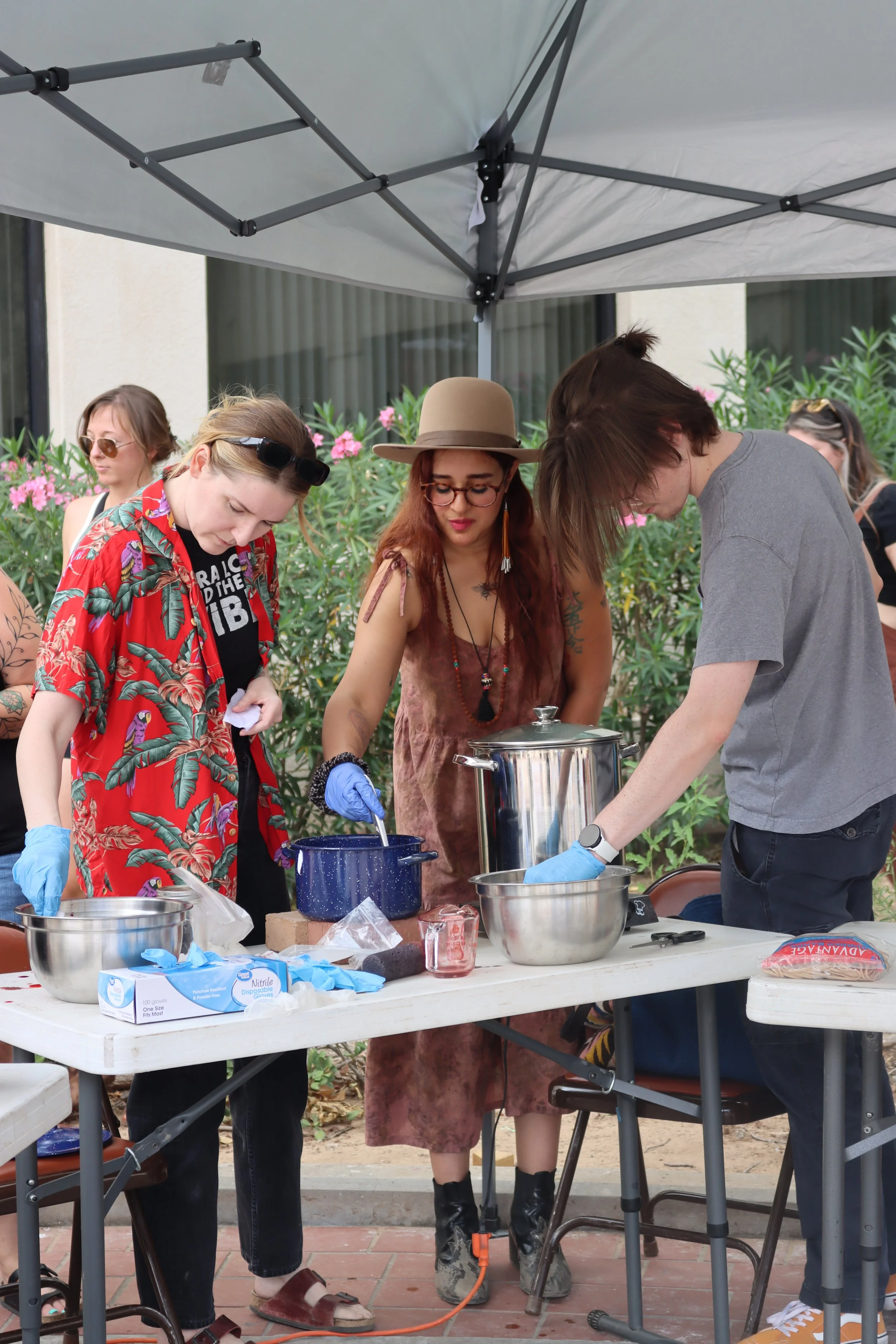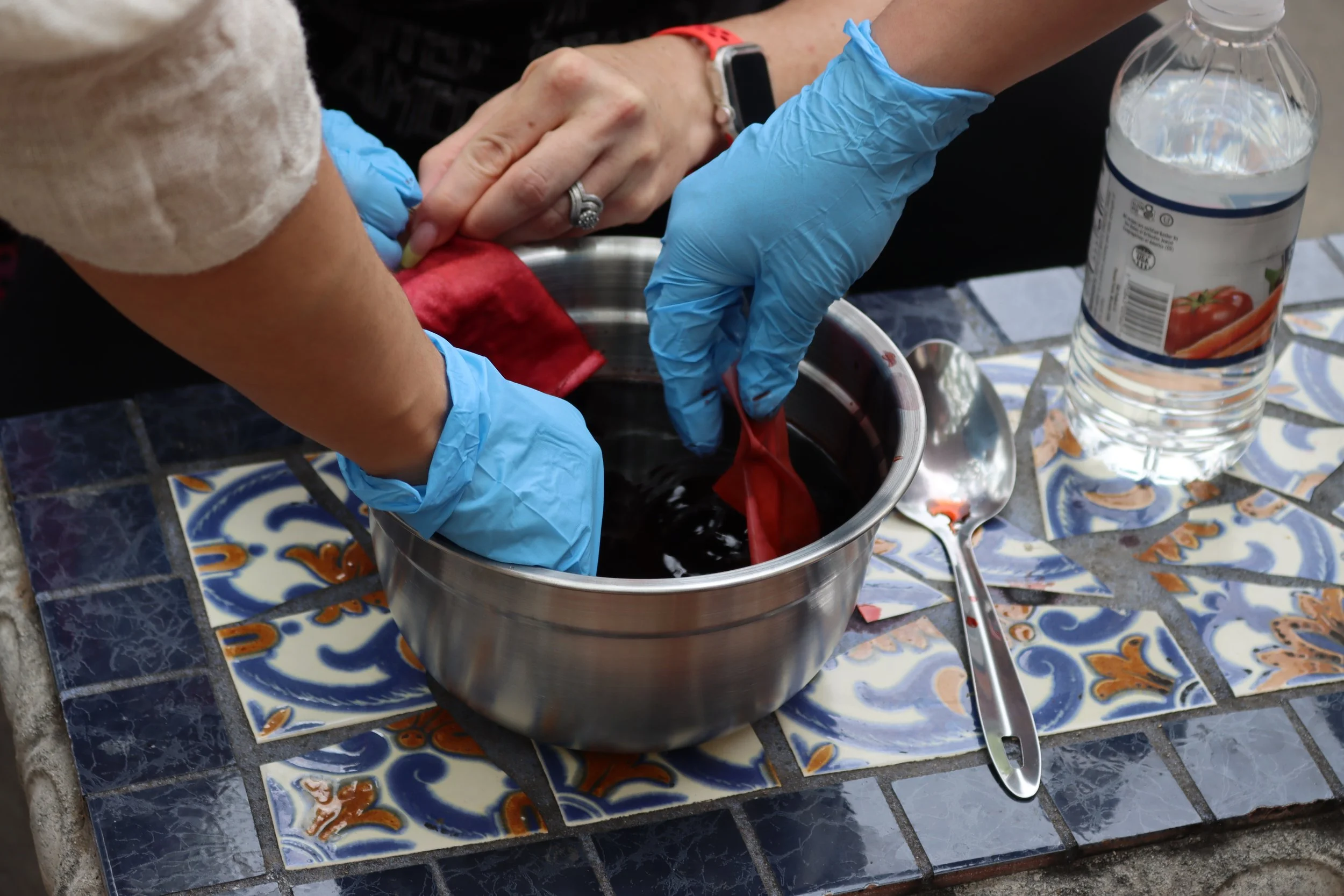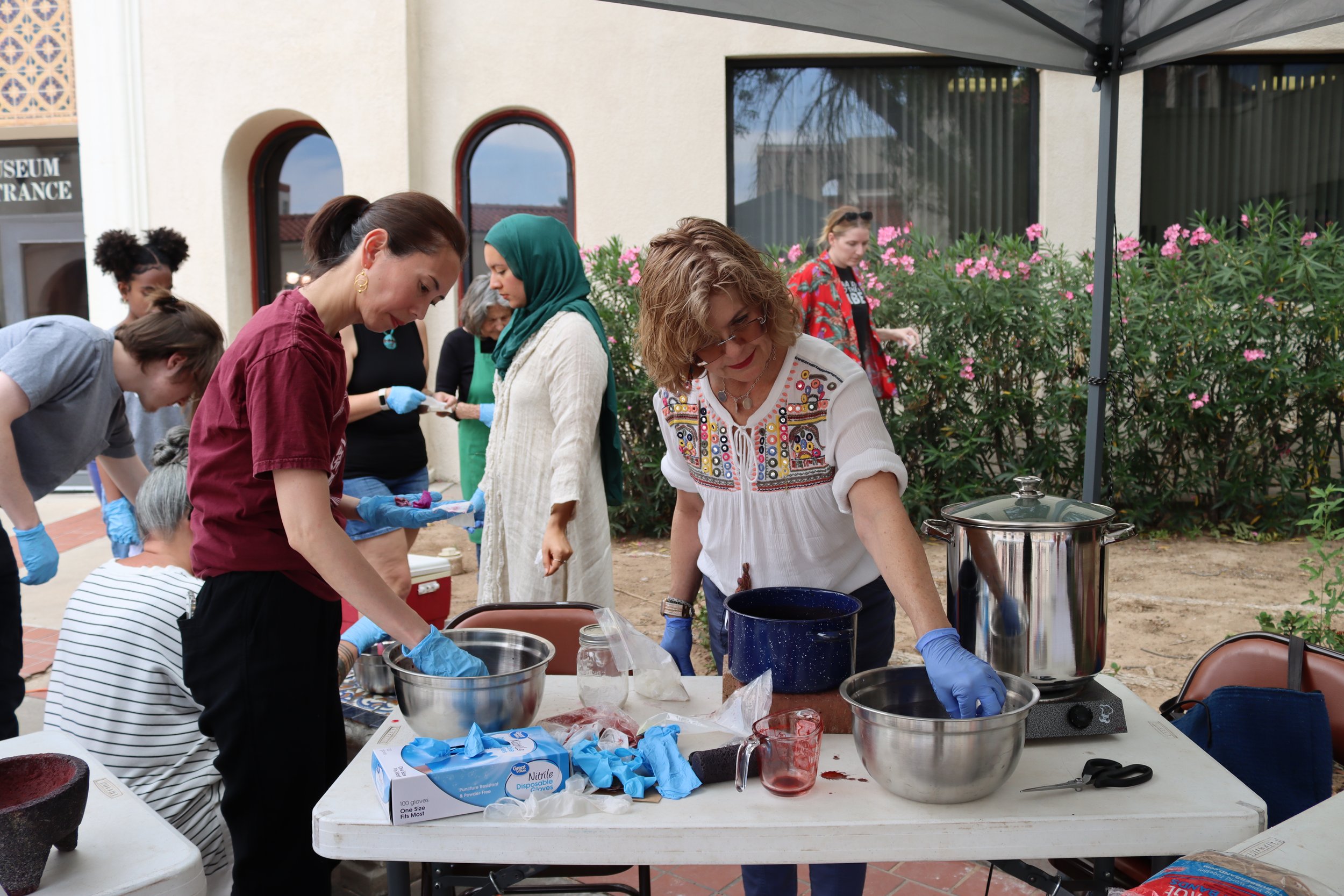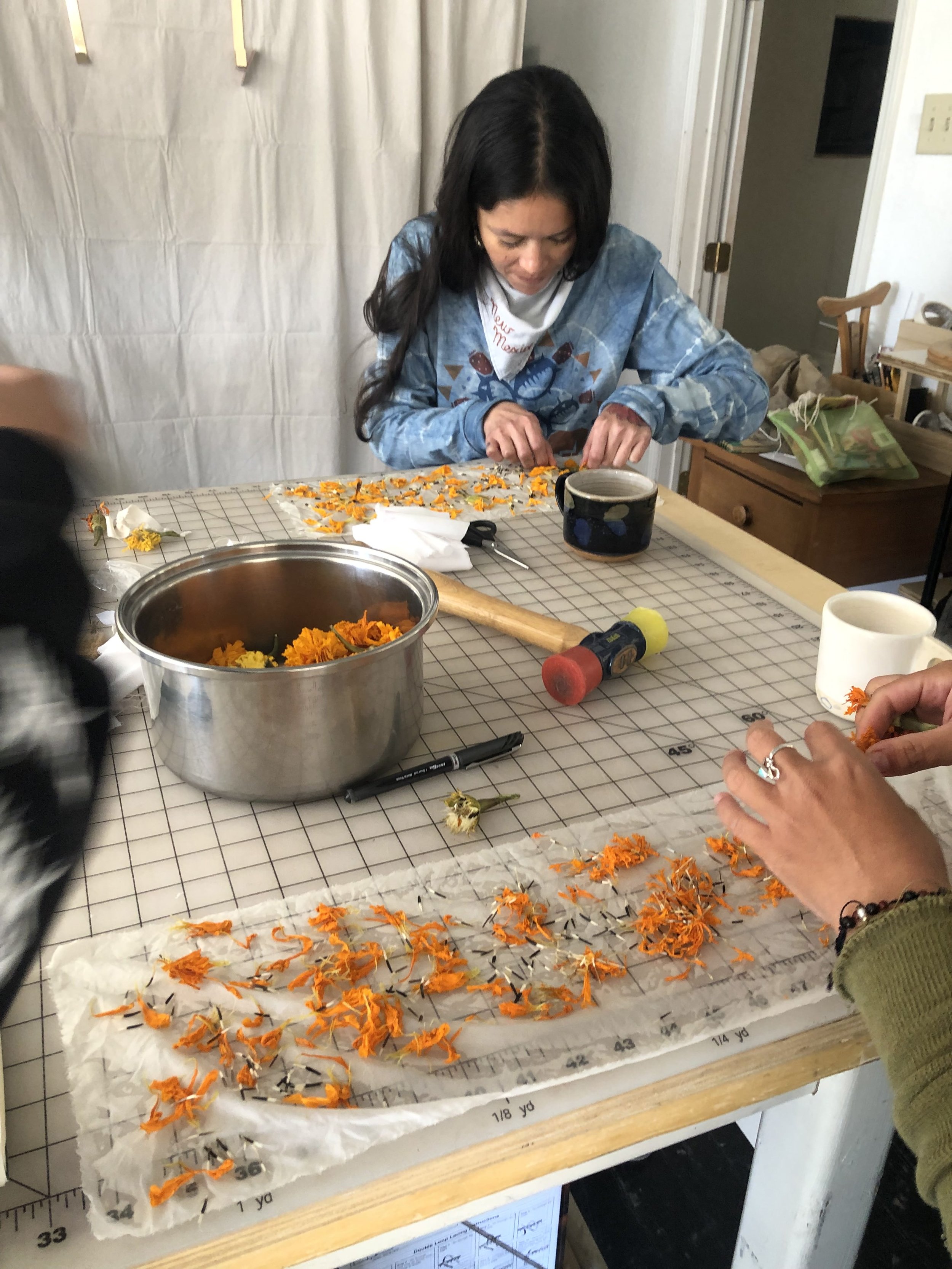
WORKSHOPS
NATURAL DYE WORKSHOPS
Explore the vibrant world of natural dyeing in my workshops, featuring marigold, gobernadora, and cochinilla plants. Participants discover the art of transforming textiles with sustainable, plant-based pigments, creating a spectrum of rich and unique colors. The hands-on experience covers the entire dyeing process, from harvesting plants to immersing textiles in the natural dye baths.
Having successfully offered these workshops at nonprofit institutions, art spaces, museums and galleries, university and educational programs, I bring a wealth of experience tailoring the content for diverse audiences. Participants engage in eco-conscious practices, learning about the cultural and historical significance of each plant. The workshops promote sustainable artistry, fostering creativity, environmental awareness, and a deeper connection to natural resources.
Attendees not only leave with newfound knowledge but also with their own hand-dyed textiles, each piece telling a story of creativity, sustainability, and the beauty of natural dyes. Join me in this enriching journey of exploration and artistry with nature.
NaturAL DYE WORKSHOP MATERIAL CREATED IN COLLABORATION WITH LA SEMILLA FOOD CENTER
MARIGOLD
In the ancient times of the Aztecs, the tale unfolds of Xóchitl and Huitzilin, two lovers who ascended a sacred mountain dedicated to Tonatiuh, the revered Sun God. Their daily ritual included carrying vibrant flowers as tokens of their love and reverence. Yet, destiny intervened when war beckoned Huitzilin, leading to a tragic loss that left Xóchitl in profound grief.
In her sorrow, Xóchitl sought solace atop Tonatiuh's towering peak, pleading to be reunited with Huitzilin in the afterlife. Empathizing with their unwavering devotion, Tonatiuh responded with a single beam of sunlight, transforming Xóchitl into a radiant yellow flower. This floral masterpiece attracted a hummingbird, signaling a special symbol of eternal love. Thus, Tonatiuh bestowed upon Xóchitl and Huitzilin the everlasting gift of devotion.
As these yellow flowers continue to bloom, the love story of Xóchitl and Huitzilin perseveres—a timeless narrative of enduring love and unparalleled beauty.
INDIGO
Mayan blue, an extraordinary pigment crafted by the Mayan people and other Mesoamerican cultures, traces back to the 8th century until the 1860s in present-day Central America. This captivating hue, produced from indigo, clay, and resin, held profound significance for the Mayans.
In Ticul and Sacalum, the Mayan people referred to indigo as "sak lu'um," utilizing it not just as a color but also for medicinal purposes. Anthropologists theorize that the creation of Mayan blue was a ritualistic practice near cenotes—deep, water-filled sinkholes prevalent in the Yucatán peninsula, revered as sacred by the Mayans.
At these cenotes, a blend of indigo, palygorskite (a clay type), and copal (a resin) formed a special incense. This ritual served as a means to invoke Chaac, the Rain God, seeking rain and favorable circumstances. The intricate fusion of elements, the vibrant blue color, and the ritual itself reflected the Mayans' deep spiritual connection with nature and their belief in invoking divine forces for the greater good.
COCHINILLA
Cacti, native to Mexico and the southern United States, encompass a rich diversity of over 200 distinct varieties. Beyond serving as a source of sustenance, cacti contribute to the vibrant world of natural dyes through a fascinating partnership with cochineal, a tiny insect dwelling on cactus pads. Harvested, dried, crushed, and combined with water, these insects, when mixed with other natural elements like lime juice, unveil a palette of over 500 unique colors. Nature's marvels, such as cochineal and cacti, open up a world of possibilities in the realm of colors.
Delving into the historical tapestry, the Mixtecs, indigenous to Southern Mexico, have resided in regions like Oaxaca, Puebla, and Guerrero since pre-European times. In their ancestral era, the Mixtecs mastered the creation of a special red dye from dried cochineal, known as Nocheztli or 'Prickly Pear Blood.' This vibrant pigment found its place in sacred symbols and was a pivotal product demanded by the Aztecs following their conquest. The cultivation of cochineal in Mesoamerica traces back to the Toltec period in the 10th century, with the Aztecs utilizing these insects not only for dyes but also as a form of currency for taxes and tributes. The rich history of cochineal intertwines with indigenous cultures, leaving an indelible mark on the artistic and economic landscape of Mesoamerica.

